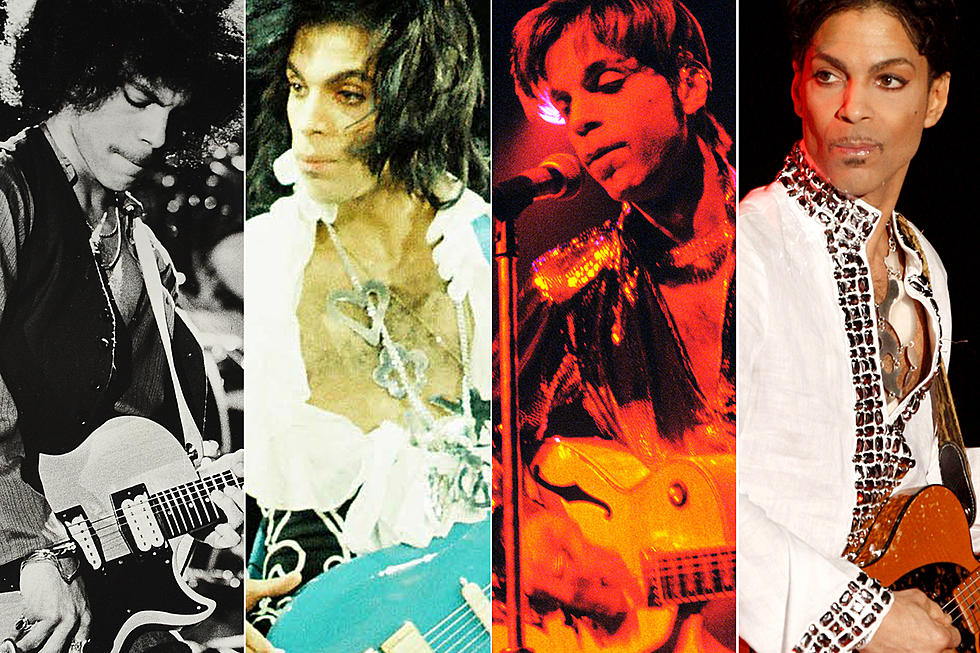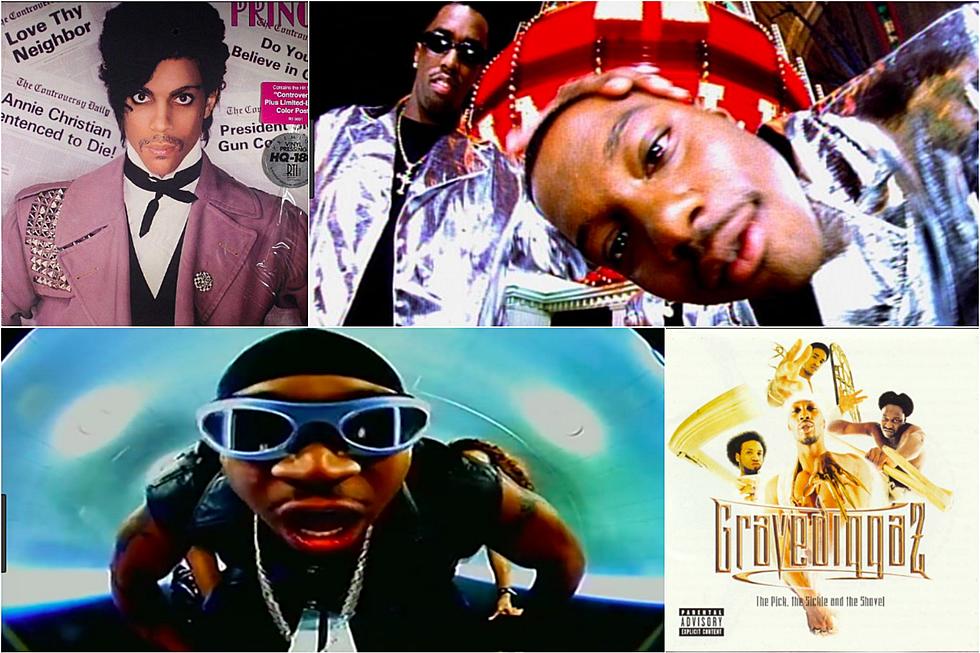
Prince’s Milestone Birthdays: Charting His Life Decade by Decade
Today, June 7, 2018, Prince would have turned 60 years old. We could make some educated guesses about what he might have accomplished if he hadn’t died in April 2016. He likely would have expanded his last tour — Piano & A Microphone — to great success. He may have had his first New York Times bestseller with his autobiography, which he was unable to finish. Award shows probably would have continued to tap him to grace their stages, shades on and cane in tow.
But beyond that, there’s really no way to predict the decisions of the brilliant but mercurial artist, who went punk in the early '80s after his first No. 1 R&B hit; went experimental following the 1984 mega-hit Purple Rain; and changed his name to an unpronounceable symbol in the ‘90s with “slave” on his cheek and a scarf sometimes obscuring his face.
Would his in-progress album, Black Is the New Black, have seen the light of day? Would he have put away his piano and guitar to focus more on writing, film, theater or an activity outside the arts?
Rather than fret on what might have been, we can celebrate what he did achieve. Here’s a look back at Prince in 10-year stages.
Prince at 10
“I taught myself to play music. … And sooner or later, people in the neighborhood heard about me.” – Prince (2009)
Though a few years shy of forming musical group Grand Central and battling other Minneapolis bands, the John Hay Elementary School student was already progressing on piano. He’d resolved to become a musician at five years old after seeing his father perform live. Once his baby sister, Tyka Nelson, came along, they’d mimic their musical parents.
“My brother would play the piano, and I would sing, because that’s what my mom and dad did,” Nelson told City Pages.
At 10 years old, Prince also got the opportunity to briefly dance onstage with James Brown. “I saw some of the finest dancing girls I’ve ever seen in my life,” he later told MTV. “He influenced me by his control over his group, [and] his dancing girls.”
Prince at 20
“I went out to New York and I got turned down my first time. … [But] I just wasn’t going to be put down.” – Prince (2009)
By 20 years old, Prince had signed a three-album contract with Warner Bros., with freedom to produce his debut. Though Prince’s management shaved two years off the musician’s age to increase the buzz — early Los Angeles Times, New York Times and Rolling Stone articles fell for the trick — his deal with the label was still impressive.
And with his ability to play and record multiple instruments, he deserved the “wunderkind” and “one-man band” labels bestowed upon him.
A couple months before his birthday, he’d released For You, which he, alone, “produced, arranged, composed, and performed.” Though the first single, “Soft & Wet,” barely made the Billboard Hot 100, it was a Top 20 R&B hit. However, Prince knew he’d have to make a stronger showing with his second album, Prince, which he’d release a year later.
“I had put myself in the hole with the first record because I spent a lot of money to make it,” he told the Los Angeles Times. I wanted to remedy that. … I wanted a ‘hit’ album.”
Prince at 30
“Making hits is the easiest thing I could do. … [But] I can’t repeat myself.” – Prince, 1991
For some reason, in our society, we’ve identified the age of 30 as the deadline for achieving one’s life goals. As a result, many people enter their fourth decade in a state of panic or despair, lamenting their shortcomings. Prince was not one of those people.
By 1988, Prince had released 10 albums, half of them at least platinum, and one of them the monster hit Purple Rain, which generated two No. 1 hits and topped 13 million sales by 1991. The accompanying movie grossed $80 million worldwide, and opened the door for Prince to release two other films before his 30th birthday. (And there was much more unreleased content where that came from.)
He’d graced four Rolling Stone covers, and collected four Grammys, three MTV Video Music Awards and an Oscar. He’d also built a little facility called Paisley Park, which was credited for boosting the Minnesota film, video and recording industry.
All that isn’t to say Prince didn’t have his share of existential crises. In response to claims he’d abandoned funk music, and lost his black audience, he recorded the dark, sexual Black Album. However, declaring the project evil, he replaced it with the spiritual, upbeat Lovesexy. But the latter was Prince's lowest-charting album in several years, and the accompanying tour saw lower attendance than previous outings.
Prince was also contending with the rise of hip-hop, which he initially dismissed. However, as his commercial success took a dip, he began to engage the new genre. And despite expressing a disregard for “making hits,” he entered the '90s with attempts to be more accessible musically, and to media, at least initially.
Prince at 40
“I had to get freed from the mentality of being a slave.” – Prince, 1998
By 1998 Prince wasn’t called Prince at all. Five years prior, he’d changed his name to an unpronounceable symbol to have more control of his musical output. With “slave” scrawled on his face, he advocated for ownership of his master recordings — which he officially received in 2014 — and encouraged other artists to do the same. By 1996, he was free of contractual obligations to Warner Bros., and celebrated his success as a new, independent artist with the triple-album Emancipation. The album also highlighted his marriage to Mayte Garcia. (The two later had a son who tragically died shortly after birth.)
During this time, Prince was one of the first artists to use the internet to distribute his music, launching his first official website in 1996, and online retail shop in 1997.
A year later, Prince would release the album Rave Un2 the Joy Fantastic, distributed via Clive Davis’ Arista Records. Though Davis had just helmed a successful comeback for Carlos Santana, it would take several more years for Prince to reclaim his throne in the eyes of the media.
Prince at 50
"I'm single, celibate and sexy.” – Prince, 2008
At 50, Prince was a Jehovah’s Witness who spoke openly about his faith and expunged older, explicit songs from his repertoire. However, he was firmly on the other side of a wildly successful comeback in 2004. That year, he released the popular Musicology album, embarked on a high-grossing tour, and was inducted into the Rock and Roll Hall of Fame with a show-stealing guitar solo on the Beatles' "While My Guitar Gently Weeps."
Two years later, he won a Webby Award for his NPG Music Club. But by 2008, he’d become notorious for issuing cease-and-desist letters to anyone posting his content anywhere online. He would later declare the internet “completely over,” though he softened his stance and partnered with Tidal before he died.
But it was his performances that stood out during this period. In addition to his 2006 Las Vegas residency, he broke a record for selling out his 21 Nights in London affair at the 02 Arena in 2007. And then there was the Super Bowl halftime show to end all Super Bowl halftime shows.
Prince continued to sell out concerts up until his death. With the exception of his 2006 No. 1 album, 3121, his music didn’t exactly burn up the charts. But Prince seemed well aware of his worth beyond industry measurements.
“I am music,” he said.
Prince Year by Year: 1977-2016 Photographs
More From TheBoombox









